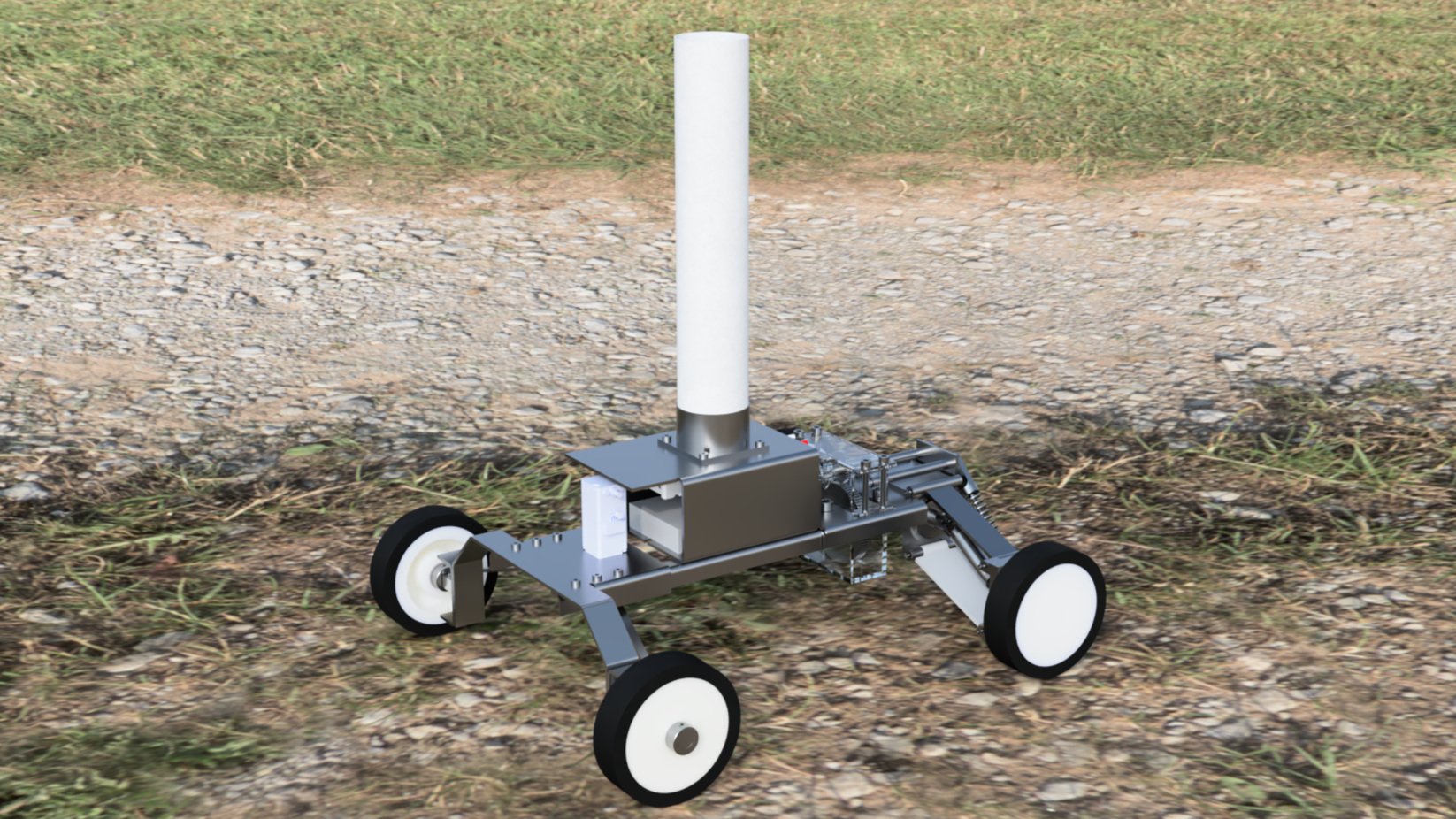RC Fireworks Launching Platform
Design Specifications
The fireworks car’s intended use was to drive a safe distance from its operator before launching a standard consumer-grade fireworks mortar. To accomplish this task:
It had to maintain a speed of 4 km/hr (walking pace) on a <30 deg incline.
Its suspension had to absorb the full impulse of firing to avoid damage.
This picture is a rendering of the final design. I created the renderings using Autodesk Fusion 360’s built in rendering tools.
Major Components
The focus of the project was the drivetrain and suspension due to the class’s material on gears, bearings, and springs. Our calculations were used to show that the suspension could withstand the force of firing and that the drivetrain would be able to move the car at its design speed. We used Python code in Jupiter Notebook to keep calculations up to date as the design evolved.
Drivetrain
The drivetrain was the bulk of the project. Power was provided by an off-the-shelf three phase electric motor, but the torque needed to be increased to maintain the design speed across terrain. The gearing in the gearbox and differential produced an approximately 50:1 ratio, ensuring sufficient power to move the 50 kg car even with expected inefficiencies.
Suspension
I designed the front suspension shown here, as well as the chassis and motor mount. I was also in charge of maintaining the full assembly and producing renders of each component.
Drawings
The latter stages of the project included producing a full mechanical drawing package for the design. I used my co-op experience to implement a proper design and check process for the drawings.
Design for Manufacture
Many of the major components were specified as bent sheet metal. Using sheet metal was a consideration for manufacturability as well as an opportunity to learn the drawing style for a different type of component.



